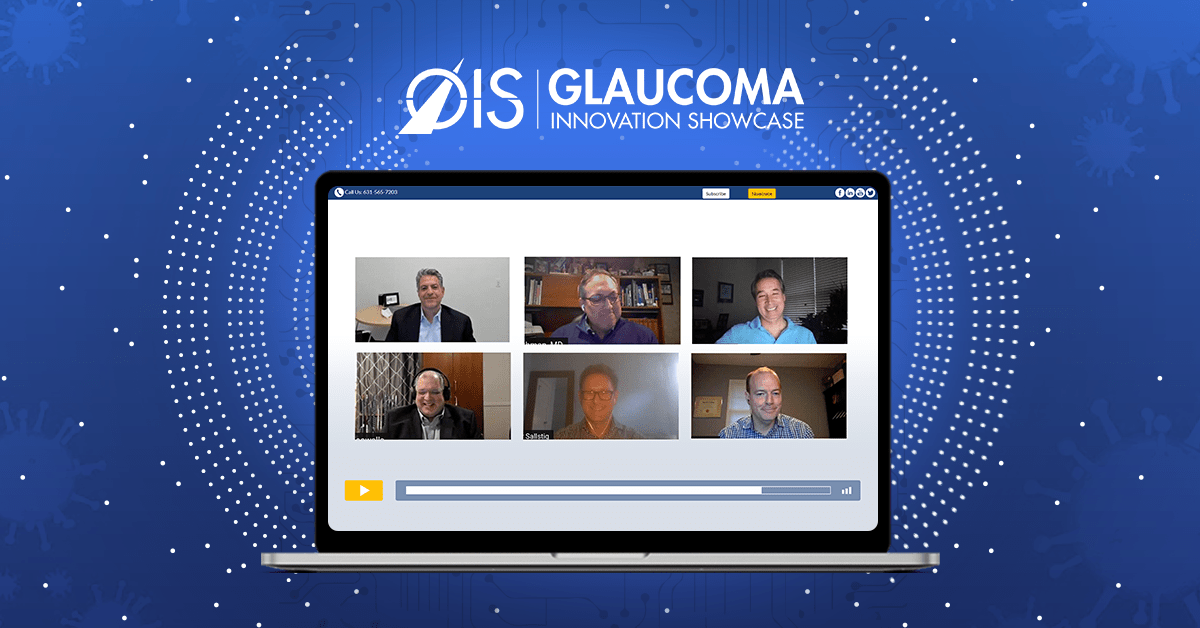The Next Wave of Glaucoma Innovation: Moving Beyond MIGS

Part 2 of 2
Micro-invasive glaucoma surgery (MIGS) has been in the forefront of innovation in the glaucoma space, and while MIGS innovation still has room for growth, a host of other strategies for treating glaucoma – from neuroprotection to sensors for capturing intraocular pressure (IOP) readings and advanced forms of optical coherence tomography (OCT) imaging to speed up clinical trials – are also gaining traction.
This second installment reporting on the “Industry Insights on the Glaucoma Market” panel at the virtual OIS Glaucoma Innovation Showcase focuses on MIGS and beyond.
What’s Next in MIGS?
Ramin Valian, VP, marketing interventional glaucoma, reimbursement pipeline, Allergan, still sees a lot of upside in MIGS innovation. “What we would like to see is earlier intervention,” he said. “This year we launched the first biodegradable implant (Durysta bimatoprost implant) for the management of glaucoma and ocular hypertension in open angle patients, which was really the first innovation in the post-MIGS era. We now have a drug-eluting polymer that’s implanted and lasts approximately 15 weeks for a patient. And this is what I think the future is going to look like because if you look at the pipeline of other companies as well, there are other advances on drug delivery with ocular therapeutics.”
Session moderator Robert Rothman, MD, partner at OCLI/Glaucoma Consultants of Long Island and founding partner and principal of InFocus Capital Partners, brought up Santen’s PreserFlo microshunt.
Directing his question to Peter Sallstig, global head development division, SVP, and corporate officer, Santen, Dr. Rothman asked, “What are your thoughts on Santen’s release of this product and what may be in store for us in the future, regarding surgery to lower pressure?”
Sallstig responded, “The PreserFlo has been on the market in Europe for quite some time, and we’re hopeful that we’ll see it also in the US market pretty soon. Besides that, I believe that MIGS in itself is still very much in the infant stage that requires further innovation, improving the technologies.”
Examples of new modalities Sallstig brought up are the Multi-Pressure Glaucoma Management (Equinox) and the Beacon Aqueous microshunt (MicroOptx).
The Role of Diagnostics
Dr. Rothman pointed out that all the panelists are with drug companies, but noted a large opportunity exists for business growth in diagnostics – a needed advancement that has accelerated in the face of COVID-19. He asked if anyone on the panel is pursuing opportunities outside of therapeutics, including diagnostics and potential artificial intelligence.
Novartis is, said Jehan Tamboowalla, the company’s head of new ophthalmic products. “We tend to marry our diagnostic efforts with our therapeutic efforts, where appropriate,” he added. “So we look at it as an enhancer and a way to capture data we can use to seek reimbursement.”
New Direction for Therapy
Dr. Rothman pointed out the focus in treating glaucoma has always been on lowering IOP, and said other treatment pathways need to be considered. He asked the panel, “Is anyone taking a look at neuroprotection or non-IOP lowering therapies for the management of glaucoma, and can comment on whether that’s a viable business pathway?”
“We’ve looked at a couple things that look somewhat promising, but in my mind you really need to go back to the laboratory on this one,” said Robert Kissling, VP, medical affairs, Bausch + Lomb. “We don’t have a clear enough understanding of the pathophysiology of glaucoma; it’s poorly understood. For some people, it’s a mechanical process; others will tell you it’s a vascular one; and there’s everything in between. Until the physiology is understood a bit better it’s going to be a tough area.”
Said Allergan’s Valian, “The key point is that we know people lose vision despite drops or managing IOP. This is a progressive disease, so neuroprotection or preserving vision is going to be critical in the evolution of really finding something that preserves the optic nerve.”
Further exploring neuroprotection is the right path, said Santen’s Sallstig. “Two areas where there has been little done but there are opportunities are stem cell therapy and gene therapy. I think those are definitely worth looking into.”
What’s needed is a long-term strategy on how to change the fundamental biology of the disease, said Tamboowalla of Novartis. “It could be outflow restoration, it could be neuro-enhancement or neuroprotection,” he said. “The jury is still out on what works best, but I think getting the fundamental science in place is going to allow us to make those decisions.”
Further On Down the Road
Dr. Rothman then asked the experts what they are excited about for the future of glaucoma therapeutics.
Mark Hagler, senior vice president, head of ophthalmics, oncology and long-term care, Sun Pharmaceuticals, said, “There’s not one thing, there are so many things. Research on intraocular sensors, new delivery platforms, gene therapy, there’s a lot going on.”
Santen’s Sallstig is excited about the approval of PreserFlo in the US. “Improvements in the field of neuroprotection, gene therapy, improvements for sustained drug release, any kind of nanotechnology, targeted delivery, reducing side effects, those sorts of things we’re very much interested in,” he added.
For Valian and Allergan, it’s drug delivery, “because that’s the next frontier in this space. But there are certainly other frontiers like neuroprotection and IOP sensing technologies.”
“We have to be realistic in terms of what we can achieve and how, and that means understanding and going back to the science,” said Novartis’ Tamboowalla. “So for me, the fact that we’re doing natural history studies, and looking at novel endpoints, and looking at advanced forms of OCT to see if there’s something we can do to shorten the clinical trials, those things are really exciting.”
B+L’s Kissling agreed. “The most exciting part of glaucoma is still out there in the laboratory,” he said. “It’s beyond IOP.”
